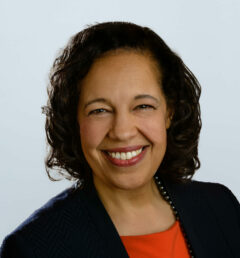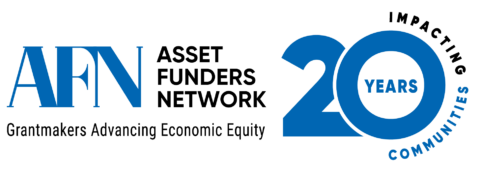This blog is a part of a year-long series called “Roots to Horizons” commemorating AFN’s 20 years in the nonprofit sector.
Mensah began her career in commercial banking at Citibank, then joined the Ford Foundation, where she was responsible for the country’s largest philanthropic grant and loan portfolio of investments in rural America. In the Obama administration, she served as Under Secretary for Rural Development in the U.S. Department of Agriculture, managing a $215 billion loan portfolio. Most recently, she led the Opportunity Finance Network, a national network of community development financial institutions.
As an early asset funder, how did you experience the field as it first emerged?
It was quite lonely to fund on the edge of a new field. While asset building always made a lot of sense, it was not the established approach. We had a whole set of practices focused on skills and income, but to name assets as a barrier was radical. By 1996 the Ford Foundation had created an entire division called Asset Building and Community Development; yet it was a solitary experience. It was crucial to establish a space for funder networks to develop. We needed partners and channels to push ourselves and defend the directions and practices that were not the dominant thinking about poverty and its antidotes in the U.S. We required platforms like the one AFN has built to share knowledge, gain deeper insights into the work, cross-pollinate ideas and solutions, and explore opportunities for joint funding initiatives.
What stands out as some of the defining moments in our asset-building journey?
Academia’s investment in the scholarship deserves a lot of the credit for kickstarting the shift towards asset development. Michael Sherraden’s Assets and the Poor, Melvin Oliver’s Black Wealth/White Wealth, co-authored with Tom Shapiro at Brandeis University — these were breakthrough thinkers and works that spurred hundreds of dissertations across intersectional fields, inspiring a field of practice in asset building as an approach to fighting poverty.
Along with academic work, we funded robust experimentation and asset demonstration, primarily led by the Corporation for Enterprise Development, which is now known as Prosperity Now. Unquestionably, CFED (Prosperity Now) created a movement and then built a field of practice. They grafted the new asset-building work onto the existing field of micro-enterprise and CDFI. And so, early in the 90s, we began to prove what anyone who has ever struggled or worked overseas already knew – that individuals with low incomes save. It shouldn’t have been hard to understand, but in the U.S., it went against people’s ideas and policies, including losing one’s welfare benefits if you or your kids saved money.
Another critical breakthrough was convincing the financial sector that a new level of assets was coming for low-income individuals. And so, in addition to Prosperity Now, other intermediary institutions helped define the early field. These included Financial Health Network, formerly, CFSI, Aspen’s Program on Financial Security, and Commonwealth, formerly, D2D — all working to expand the tent of stakeholders and investors from the public and private sectors investing and innovating in this field. A quick glance at the Asset Funder Network’s robust and diversified membership today reflects these early and ongoing efforts to sustain the movement’s inclusive appeal.
What do you see as the thorniest challenge to the movement’s progress?
The idea that foundations are society’s R&D is very alluring. We take on risks to support innovative ideas, and, when successful, these ideas attract government attention, leading to their adoption as official policies or practices. In 2002, this exact model seemed to be playing out across the pond when Tony Blair’s government created the UK Child Trust Fund, citing Sherraden’s book. Suddenly, 750,000 children born every year in the UK had a trust fund.
The fact that we haven’t had a similar federal victory needs to be acknowledged. I am absolutely convinced that someday America will move in this direction. But this is not just about a single law that needs to be passed; it’s about appropriations on a huge scale that disrupts so many systems. That’s still what it’s going to take to give every American a fighting chance at wealth in this country, and I think it’s absolutely worth it. If we structure savings and asset building from birth with appropriate matches, we can help people achieve these milestones like education, first homes, retirement savings — assets that guide your whole life.
What gives you hope that large-scale change is possible?
Investing in asset development is a substantial win-win situation. I have hope that the allies will eventually line up for big change. We all do better when we all do better! Most industries don’t want to leave half of Americans behind to build wealth in this country. We see this most poignantly on the regional level, where the changes are more visible and often more attainable. And so part of what gives me hope is that funder tables like the Asset Funders Network have continued to keep the hope of assets for all Americans alive. It’s the right dream, and I look forward to the years ahead, the future breakthroughs, and seeing more Americans have a real chance at building wealth.
Lisa Mensah, President and CEO of the Oregon Community Foundation.



